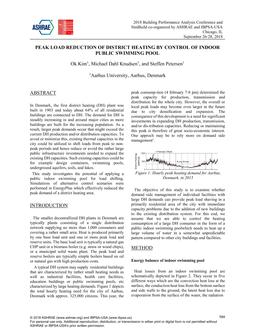Description
In Denmark, the first district heating (DH) plant was built in 1903 and today about 64% of all residential buildings are connected to DH. The demand for DH is steadily increasing in and around major cities as more buildings are built for the increasing population. As a result, larger peak demands occur that might exceed the current DH production and/or distribution capacities. To avoid or minimise this, existing thermal capacities in the city could be utilized to shift loads from peak to non-peak periods and hence reduce or avoid the rather large public infrastructure investments needed to expand the existing DH capacities. Such existing capacities could be for example design containers, swimming pools, underground aquifers, soils, and lakes.This study investigates the potential of applying a public indoor swimming pool for load shifting. Simulations of alternative control scenarios were performed in EnergyPlus which effectively reduced the peak demand of a district heating area.
Citation: ASHRAE/IBPSA-USA Bldg Simulation Conf, Sept 2018
Product Details
- Published:
- 2018
- Number of Pages:
- 6
- Units of Measure:
- Dual
- File Size:
- 1 file , 3.7 MB
- Product Code(s):
- D-BSC18-C081




